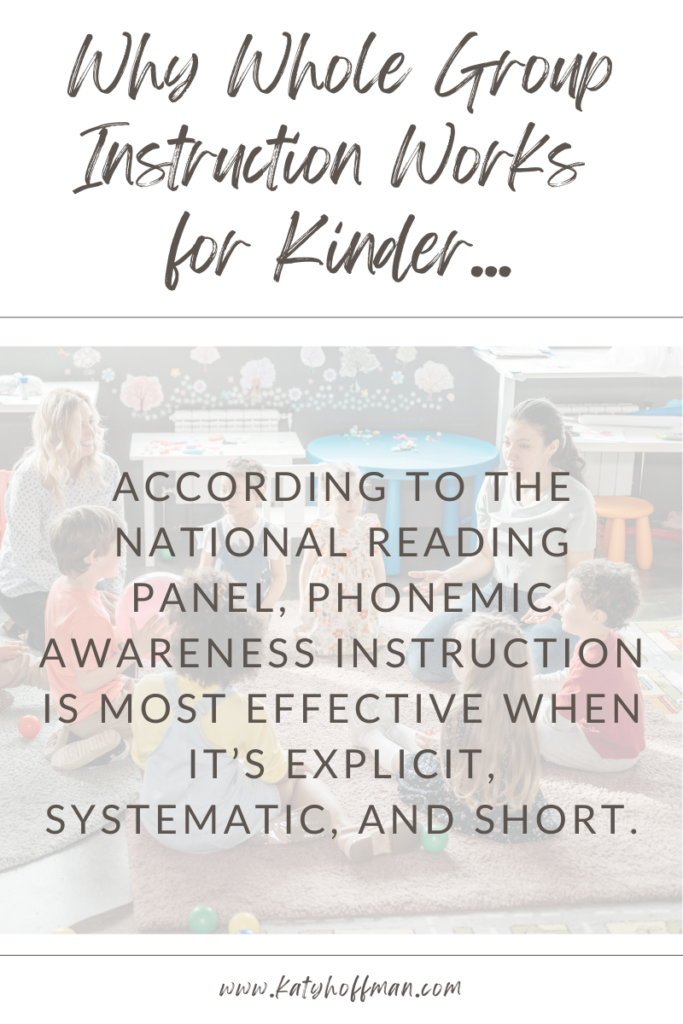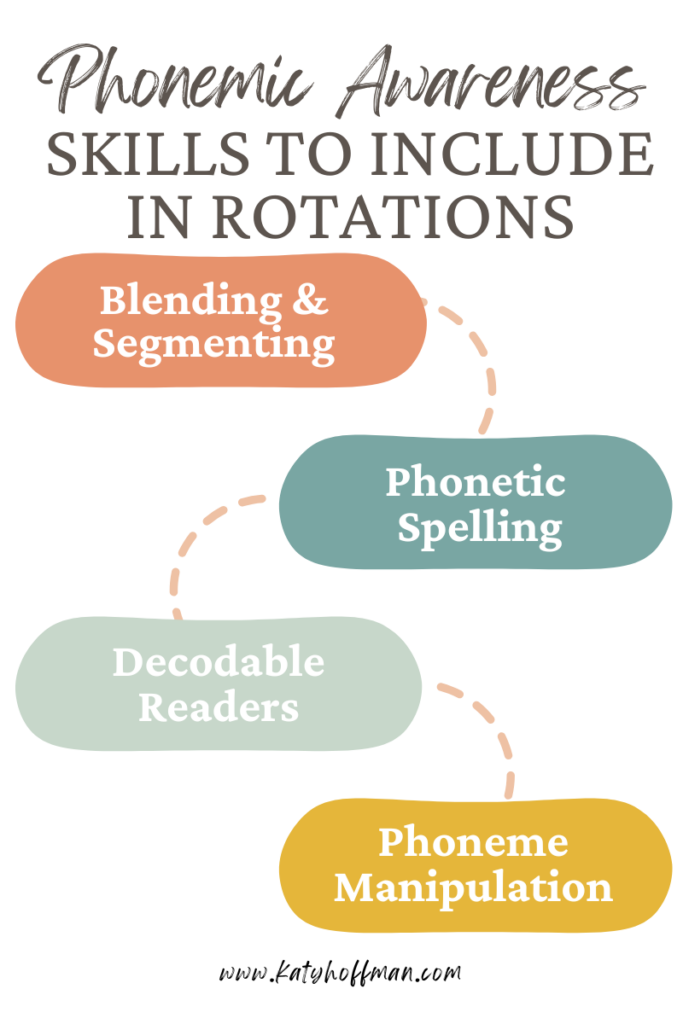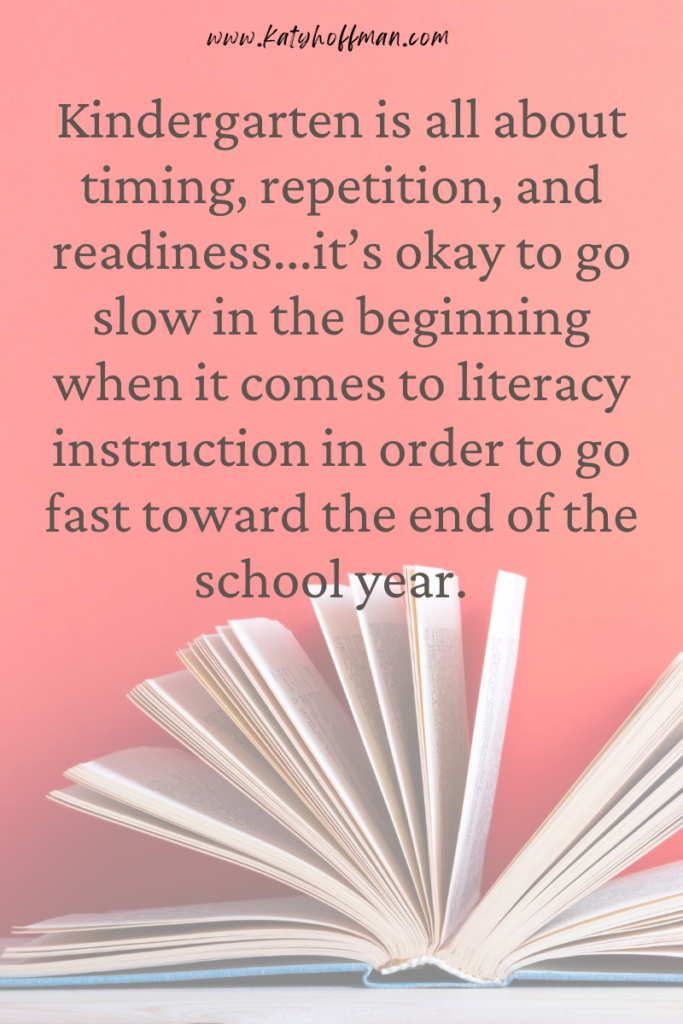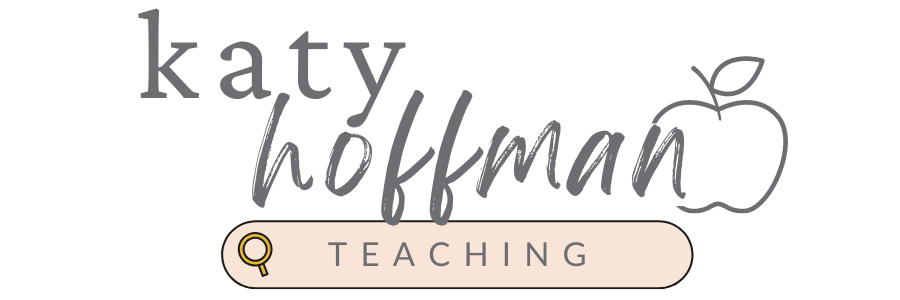Whole Group First, Small Group Later: How I Teach Kindergarten Literacy
Can I just start by saying I am fully prepared for a whole roast session after you read this post. If you have been following me for a few years, you know a big portion of what I share about has to do with simplifying teaching and using whole group instruction to do that. So when I started implementing small group rotations during my Kindergarten literacy block this year, I felt like I was cheating on you. haha…It’s been a few weeks, and I just wanted to share my thoughts and what has been working, because you know I’m gonna keep it real always.
I’ve spent the majority of this year teaching literacy whole group, and guess what? It has worked beautifully, just like it always does. It allowed me to focus on the most important foundational skills: phonemic awareness, letter names, letter sounds, and building toward reading CVC, CCVC, and CVCC words with phonics skills.
Now, 3/4 of the way through the year, I’ve introduced small group rotations that offer simple differentiation — and I want to share exactly how they’re working for me (and how they can work for you, too!).
*Side note…I have a student teacher, and the extra set of hands is what really propelled me to try rotations. I also use Amplify for our reading program, and at this point in the year, I am seeing the gap between the high flyers and the fragile friends who just aren’t ready yet for some of the texts in the last couple units.

Whole group Kindergarten literacy instruction vs. small group instruction
Why Whole Group First? Whole-group instruction gives your kinders a common foundation. I had varying levels at the beginning of the year with some students knowing all their letters and sounds vs. some who knew none. The repetition and modeling they get in those early months build confidence and readiness, and offer review and solidification of skills for the high flyers. I have an entire blog post dedicated to whole group instruction tips here.
👉 A little research love: According to the National Reading Panel, phonemic awareness instruction is most effective when it’s explicit, systematic, and short. Whole-group practice allows us to deliver those quick, daily repetitions — clapping syllables, isolating sounds, blending, and segmenting — all together.
For most of the year, my focus for Kindergarten literacy has been on:
- Daily phonemic awareness routines
- Letter name and sound mastery
- Whole-group blending and decoding with CVC and CCVC words
- Individual practice with handwriting fluency, sound fluency, and decoding text.
This simple foundation has set my students up for success once small groups became an option.
Why Small Groups Now? When your students have that strong whole-group foundation, small groups become about refinement and targeted practice, not survival.
At this point in the year, I’m seeing exactly where my learners need a little extra support or challenge. Small groups give me the space to target those needs without overwhelming myself or them.

Quick and easy kindergarten literacy rotations
My Small Group Routine (Simple + Effective!) After our whole-group lesson, we roll into quick rotations — only 7–10 minutes each — just enough time to hit a skill, practice, and move on. No fluff, no stress.
Here are my 4 small group rotations:
✨ Rotation 1: Spelling Practice
We use magnetic letters, whiteboards, and sound boxes to build words, focusing on current phonics patterns. If students can spell a word, they can read it.
✨ Rotation 2: Reading Practice
Students read decodable readers or sentences. It’s short and sweet, building fluency and confidence.
✨ Rotation 3: Phonemic Awareness Fun
Games, oral drills, and picture cards to manipulate sounds — always playful, always quick.
✨ Rotation 4: Independent Task
A literacy center with a familiar activity they can complete independently or with a buddy. We are loving word searches from Amie at Literacy Edventures.
And that’s it! Quick, focused, and manageable.
The Bonus: UFLI Skill Shots! This is one of my favorite parts. During our read-aloud time (my student teacher is teaching at this time), my para and I pull 6 students for one-on-one 10-minute UFLI Skill Shots — quick, targeted reviews for students still solidifying certain letter sounds or phonics patterns. These little bursts make a huge difference and don’t disrupt our rotation flow.

How to plan small group reading without stress
The Extra Hands (and How I Use Them!) Right now, I’m fortunate to have a student teacher and two paras during part of my literacy block. I plan very intentionally around that help:
- During the 20 minutes when both paras are present, I schedule my most supported groups.
- My more independent groups rotate to centers they can handle solo when one para leaves.
If you don’t have extra help, don’t stress! You can:
- Start with just two rotations.
- Use technology.
- Have one teacher-led group and one independent block — and call it good!
- Teach an activity one day, and let it be the independent station the next day.
Teacher-to-Teacher Takeaways:
- Whole group is not only okay — it’s powerful.
- Keep small groups simple and short.
- Start small and adjust as your kids grow.
- Be intentional with any extra help.
- Trust yourself, trust your routines, and trust your students.
If you’ve been feeling like you’re burnt-out on small groups — it’s okay. Kindergarten literacy is all about timing, repetition, and readiness. Start whole group, build a strong foundation, and when it’s time, small groups will feel natural, not chaotic.
You’re doing amazing things for your kids — and you’ve got this! 💛
Want to see a peek into my rotations in action? Follow along on Instagram or TikTok @katyhoffmanteaching
